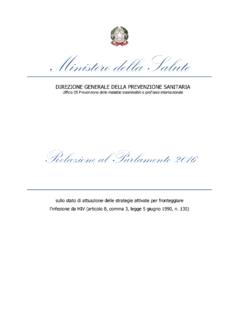Transcription of Titration of Lenti-Vectors - Lentiviral Gene …
1 Lentiviral Gene Ontology Vectors, December 13, 2007 Titration of Lenti-Vectors Medium: DMEM with Glutamine and high Glucose ( ) + 10% FBS + 1mM Sodium Pyruvate + 20mM HEPES (or 25mM) + Penicillin/Streptomycin 8mg/ml Polybrene in PBS (= 1000x stock solution. Available from Sigma) Day 1: Seed 50,000 293T cells per well in 500 L medium in 24-well plate (or NIH-3T3 cells for Eco pseudotypes). Wait for the cells to attach (2 to 5 hours). Add Polybrene to final concentration of 8 g/ml (or change medium, 500 l per well with 8 g/ml Polybrene) Add viral particles containing supernatant to the cells, 1ul per well in triplicate. Doing this the first time try the following amounts: l; 1 l; 10 l and 100 l per well (see information below).
2 Centrifuge the plate for 1 hour, 1000g, 24 C. Day 2: Change medium, use 1ml per well (without Polybrene). Day 4: Analyze the cells in a flow cytometer and calculate the titer. Calculation of the titer The titer should be calculated from wells showing between 5% and 20% positive cells ideally. Higher transduction rates lead to multiple integrations per cell and thus underestimation of the titer [Fehse et al. 2004, Pois(s)on - it's a question of , Gene Ther. 11(11)]. Therefore different amounts of supernatant have to be used for the Titration , l for high titer constructs ( containing eGFP only) and 1 l for standard constructs. 10 l and up may be necessary for low titer constructs co-expressing problematic cDNAs. T = N*P/V T: titer N: number of plated cells V: volume of added supernatant P: proportion of transduced cells Example: 1 l of supernatant yielded 12% of GFP-positive cells.
3 That means that at the time point of transduction 12% of the 50000 cells got transduced by a vector particle. T = 50 000 * / = 6 x106 /ml It is difficult to compare the titer between different laboratories. For example some labs do not perform the centrifugation step (called spinoculation or spin-inoculation) or do not use Polybrene or use Protamine sulfate instead et cetera. Also very important is the cell type that is used for a Titration , on different cell lines the titer may differ more than 10-fold. There is no titer of a vector preparation , there is only a titer of a vector preparation titrated under conditions XY on cell line Z.

